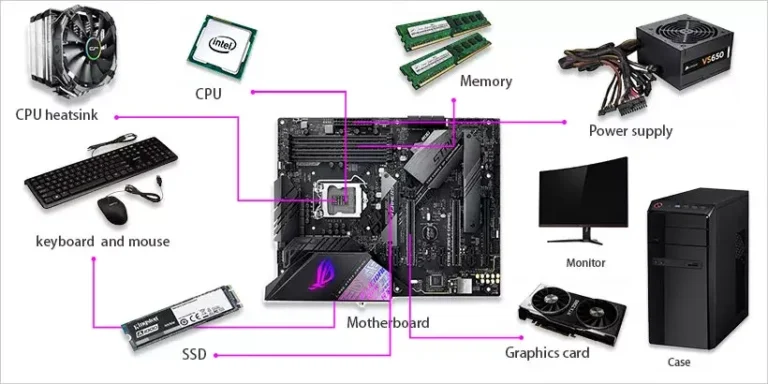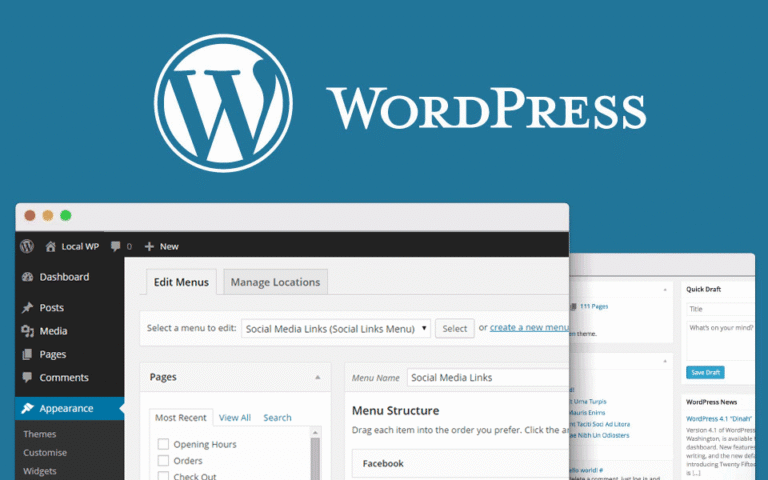
Step 1: Define the Purpose of Your Website
Before diving into tools or platforms, identify your website’s primary goal. Ask yourself:
- Do I want to sell products?
- Is this a personal blog?
- Am I offering services?
This clarity will shape the structure, design, and functionality of your site.
Step 2: Choose a Domain Name That Reflects Your Brand
Your domain is your website’s digital address. It must be:
- Short and memorable
- Easy to spell
- Aligned with your brand or business
Use tools like Namecheap, GoDaddy, or Google Domains to find and register your perfect domain.
Tips:
- Stick to
.comif possible. - Avoid hyphens or numbers.
- Use keywords if they make sense.
Step 3: Select the Right Website Builder or CMS
There are countless platforms out there, but these are the most popular:
- WordPress.org – Best for flexibility and full control.
- Wix – Great for drag-and-drop design.
- Squarespace – Stylish templates and easy editing.
- Shopify – Ideal for eCommerce websites.
Recommendation:
Choose WordPress if you want complete control and scalability.
Step 4: Purchase Hosting Services
If you go with WordPress, you’ll need web hosting. Here are some trusted providers:
- Bluehost
- SiteGround
- Hostinger
Make sure to pick a plan that offers:
- 99.9% uptime
- SSL certificates
- 24/7 support
Hosting is where your website lives—don’t compromise on quality.

Step 5: Install WordPress and Set Up Your Site
After registering your domain and hosting:
- Log into your hosting account.
- Use the one-click WordPress installer.
- Choose a theme to start your design.
From here, your journey begins. It’s easier than it sounds.
Step 6: Pick a Clean, Mobile-Responsive Theme
A beautiful design enhances user experience. Go for themes that are:
- Mobile-friendly
- Lightweight and fast
- SEO-optimized
Top free themes: Astra, OceanWP, GeneratePress. Premium options include Divi and Elementor Pro.
Step 7: Add Essential Pages and Features
Your site must include core pages such as:
- Home – Clear intro and call-to-action
- About – Your story or mission
- Services or Products – Detailed offerings
- Contact – Email, phone, and form
- Privacy Policy & Terms – Legal compliance
Additionally, add blog functionality if you’re planning to post updates or articles.
Step 8: Install Plugins to Add Functionality
Plugins extend your website’s capabilities. Essential plugins include:
- Yoast SEO – For optimizing content
- WPForms – Create forms quickly
- UpdraftPlus – Backup your website
- Elementor – Drag-and-drop page builder
- Wordfence – Improve security
Don’t overload your site with plugins—only use what you need.
Step 9: Optimize for Search Engines (SEO)
SEO is crucial for visibility. Start with the following:
- Use your focus keyword in titles and headings
- Add meta descriptions and alt tags to images
- Structure your URLs cleanly
- Write engaging, readable content
- Submit your site to Google Search Console
With consistent SEO, your website will begin to rank and draw traffic.

Step 10: Launch and Promote Your Website
Now that everything is ready:
- Test your site on all devices
- Check loading speeds
- Proofread all content
Then, announce your launch through:
- Social media
- Email marketing
- Guest blogging
- Influencer outreach
Your launch is your first impression—make it strong.
Step 11: Keep Updating and Improving
Websites are not one-time projects. Keep adding value by:
- Posting regular content
- Updating plugins and themes
- Monitoring performance
- Listening to user feedback
Regular updates ensure better user experience and higher Google rankings.
FAQs About Building a Website
1. Do I need to know coding to build a website?
No. Platforms like WordPress, Wix, and Squarespace require zero coding skills.
2. How much does it cost to build a website?
It depends. A basic site may cost $50–$200 annually. More advanced ones can go higher.
3. How long does it take to build a website?
A simple website can be ready in one day. More complex ones take a few weeks.
4. What is the best platform to build a website for free?
Wix and WordPress.com offer free plans, but with limitations.
5. Can I make money from my website?
Yes. You can monetize through ads, products, services, affiliate links, or courses.





